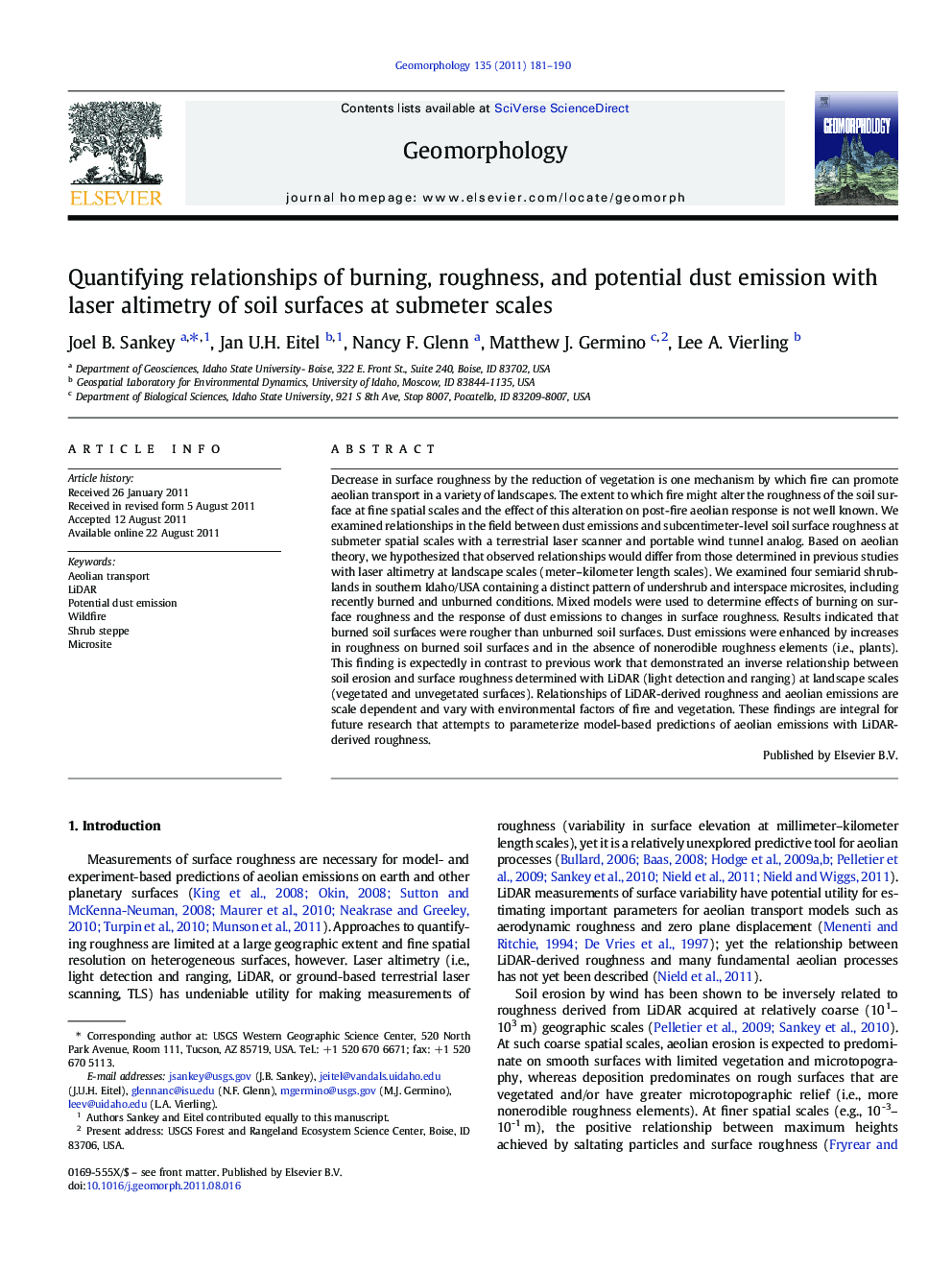| کد مقاله | کد نشریه | سال انتشار | مقاله انگلیسی | نسخه تمام متن |
|---|---|---|---|---|
| 4685440 | 1635491 | 2011 | 10 صفحه PDF | دانلود رایگان |

Decrease in surface roughness by the reduction of vegetation is one mechanism by which fire can promote aeolian transport in a variety of landscapes. The extent to which fire might alter the roughness of the soil surface at fine spatial scales and the effect of this alteration on post-fire aeolian response is not well known. We examined relationships in the field between dust emissions and subcentimeter-level soil surface roughness at submeter spatial scales with a terrestrial laser scanner and portable wind tunnel analog. Based on aeolian theory, we hypothesized that observed relationships would differ from those determined in previous studies with laser altimetry at landscape scales (meter–kilometer length scales). We examined four semiarid shrublands in southern Idaho/USA containing a distinct pattern of undershrub and interspace microsites, including recently burned and unburned conditions. Mixed models were used to determine effects of burning on surface roughness and the response of dust emissions to changes in surface roughness. Results indicated that burned soil surfaces were rougher than unburned soil surfaces. Dust emissions were enhanced by increases in roughness on burned soil surfaces and in the absence of nonerodible roughness elements (i.e., plants). This finding is expectedly in contrast to previous work that demonstrated an inverse relationship between soil erosion and surface roughness determined with LiDAR (light detection and ranging) at landscape scales (vegetated and unvegetated surfaces). Relationships of LiDAR-derived roughness and aeolian emissions are scale dependent and vary with environmental factors of fire and vegetation. These findings are integral for future research that attempts to parameterize model-based predictions of aeolian emissions with LiDAR-derived roughness.
► Burning increased soil surface roughness measured with LiDAR at < 1 m length scale.
► Dust emissions were enhanced by incremental increases in roughness on burn sites.
► Erosion-LiDAR roughness relationships differ at sub-meter vs. landscape scales.
Journal: Geomorphology - Volume 135, Issues 1–2, 1 December 2011, Pages 181–190